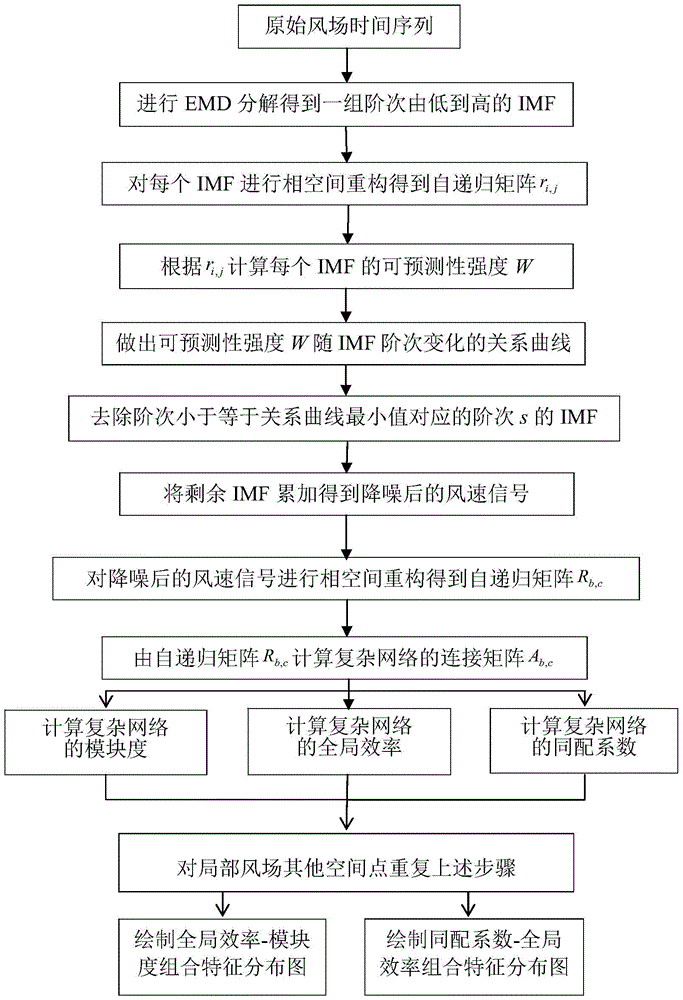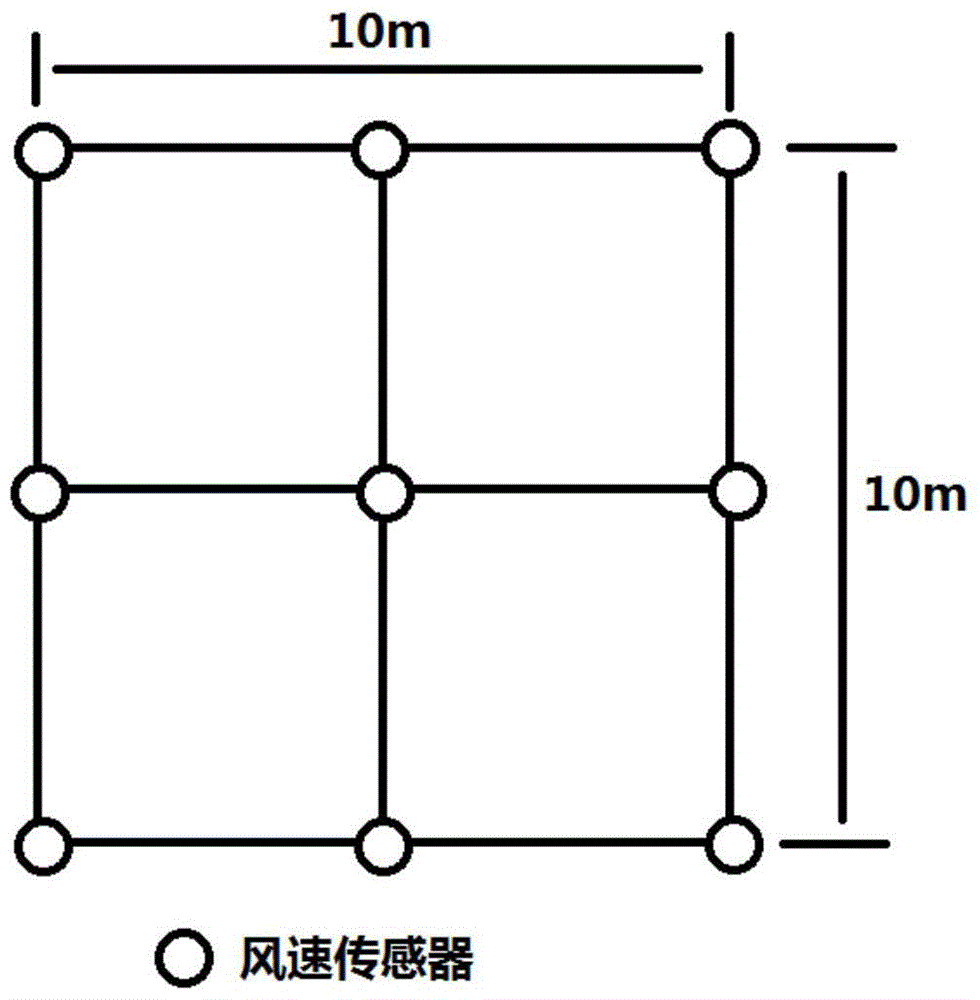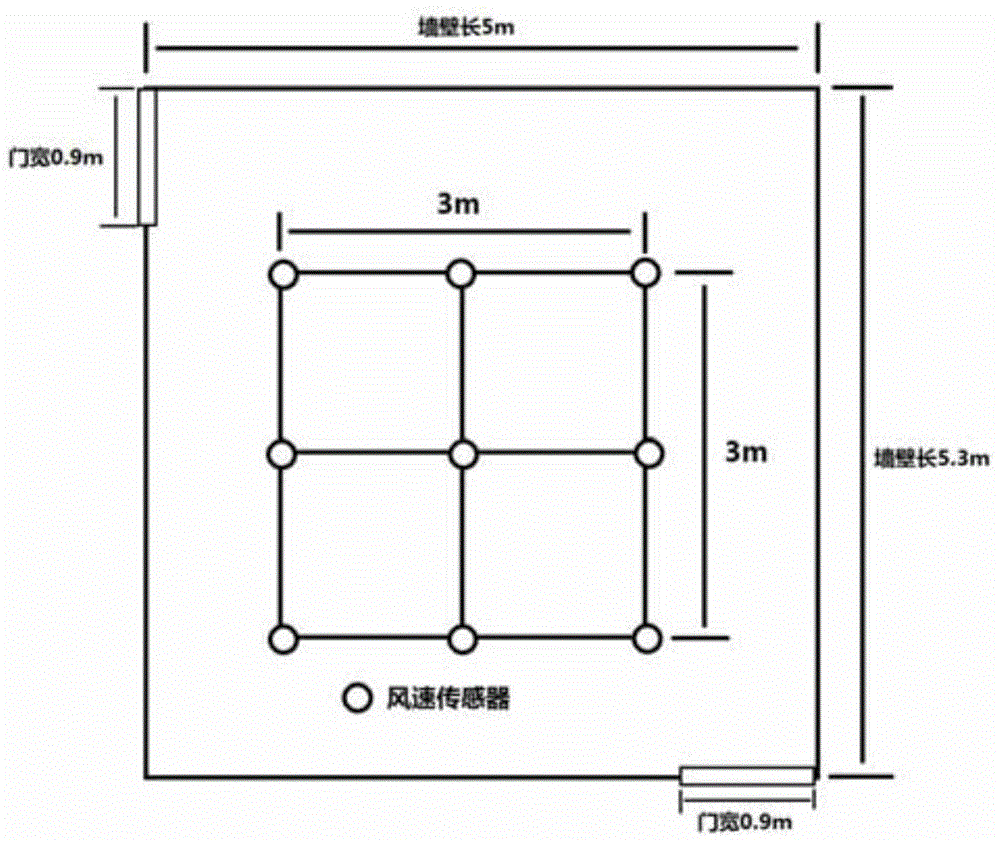Wind field characterization method with empirical mode decomposition noise reduction and complex network analysis combined
An empirical mode decomposition and complex network technology, applied in the field of near-surface wind field type characterization, can solve the problems of large volume of anemometers, noise of original wind field data, unstable measurement results, etc., and achieves strong robustness and data length. less dependent effect
- Summary
- Abstract
- Description
- Claims
- Application Information
AI Technical Summary
Problems solved by technology
Method used
Image
Examples
Embodiment Construction
[0060] The wind field characterization method of the present invention integrating empirical mode decomposition noise reduction and complex network analysis will be described in detail below with reference to the embodiments and the accompanying drawings.
[0061] The wind field characterization method of the present invention that integrates empirical mode decomposition noise reduction and complex network analysis includes the following steps:
[0062] 1) Perform empirical mode decomposition on the input wind field time series signal to obtain a set of intrinsic mode function signals from low to high order;
[0063] 2) Reconstruct the phase space of each eigenmode function signal, and obtain the state vector sequence {x(i)}, i=1,2,...,N in the phase space, and then calculate the state the corresponding self-recursive matrix r for the sequence of vectors i,j :
[0064] r i,j =θ(ε-||x(i)-x(j)||)(1)
[0065] Where θ(x) is a unit step function, when x is greater than or equal...
PUM
 Login to View More
Login to View More Abstract
Description
Claims
Application Information
 Login to View More
Login to View More - R&D
- Intellectual Property
- Life Sciences
- Materials
- Tech Scout
- Unparalleled Data Quality
- Higher Quality Content
- 60% Fewer Hallucinations
Browse by: Latest US Patents, China's latest patents, Technical Efficacy Thesaurus, Application Domain, Technology Topic, Popular Technical Reports.
© 2025 PatSnap. All rights reserved.Legal|Privacy policy|Modern Slavery Act Transparency Statement|Sitemap|About US| Contact US: help@patsnap.com



